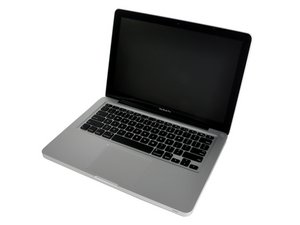You made a statement: You opened the hard drive to check to see if it was stuck
I hope you didn't really do that as the drive must be opened in a clean room as any dust can kill it and the internal parts are very fragile! If you did do that, don't do anything more if you need to recover whats on it as any movement of the drives mechanism could damage whats on it.
You'll need to ship off the drive to a data recovery service to see if they can recover the data. I must warn you it can be expensive! And there is a possibility they can't recover the data as well.
Think of it this way... You have a hand water pump at your farm you pull and push the handle nothing happens. To get it to work you need water to prime it. Once you pour water into the pump the pump Works!
What would happen if the gasket was damaged? The pump wouldn't work. You would need to replace it and then prime the pump again to get it to work.
Surprisingly, we need to follow the same path here. We need to first replace the drive with a new one and then prep it up so it works (replace & prime). Then we can try to see if we can still gain access to the drive (if you haven't opened it).
There is nothing more you can do to fix your old drive. You'll need to decide if the cost of sending it to a recovery service to recover the data is worth it. Or just move on with a new drive.
You do have a small issue here as the age of your system makes getting the correct replacement drive a bit harder. Your system only has a SATA II (3.0 Gb/s) SATA interface (2.5") so you do need to be mindful on getting the correct drive. If you can find the older Seagate SSHD drive ST1000LM000 or ST1000LM014 both of these will work in your system. The newer Seagate FireCuda SSHD drive just won't work as it is a fixed SATA III (6.0 Gb/s) only drive. If you review the two spec sheets I've linked to you can see what I mean.
If you can't find either of the older SSHD drives I would recommend getting a Samsung 750 EVO SSD
You have two things that make this systems future questionable:
- Apple has moved on with their OS's to the newer I Series CPU's. Your system can't support anything newer than OS-X El Capitan (10.11.x) which will limit you to current applications. Within MacOS High Sierra 10.13.x there are some new low level code which application developers will be using which your system can't leverage. So you do need to move to a newer CPU for that and your systems processing & RAM are limited.
- Repairability of your system will be come harder as parts become harder to get. Presently you are already hitting this as your system needs a SATA II drive which are harder to find. Within the year or so the HD makers will stop making auto sense drives like the ones I've pointed you to. Everything from then on will be fixed SATA III.
What to do??
If you are a professional you should look for at least getting a 2011 model which is more repairable than the newer models and supports High Sierra .
Then I would for now get as large an SSD I could afford with the idea I'll move it over to the new system (13" or 15" MacBook Pro 2011).
If you jump to any of the Retina models your investment will be a waste as it won't fit. But you could use an external case to mount it.


 2
2 
 329
329  970
970
4 comentarios
Can yo give us a bit more here. Like... Is this an internal or external drive, If internal what is the systems (make & model) if external what is the connection type USB, FireWire, Thunderbolt, What OS are you using, Did you bang or drop it?
Once you tell us we can then guide you.
- de Dan
We still need a bit more here... What is the exact model of your system. See if you can plug in your systems serial number here: EveryMac - Lookup or if you can'l locate it see if you can find it here: MacBook Pro listing or here MacBook listing
- de Dan
Hi Dan,
Please guide me can i check my old hard drive with an other's same model card? i think its card is damage.
- de Awais Khan
Your systems specs: [http://www.everymac.com/systems/apple/ma...|MacBook Pro 13" 2.53 GHz Core 2 Duo (Mid 2009)
- de Dan